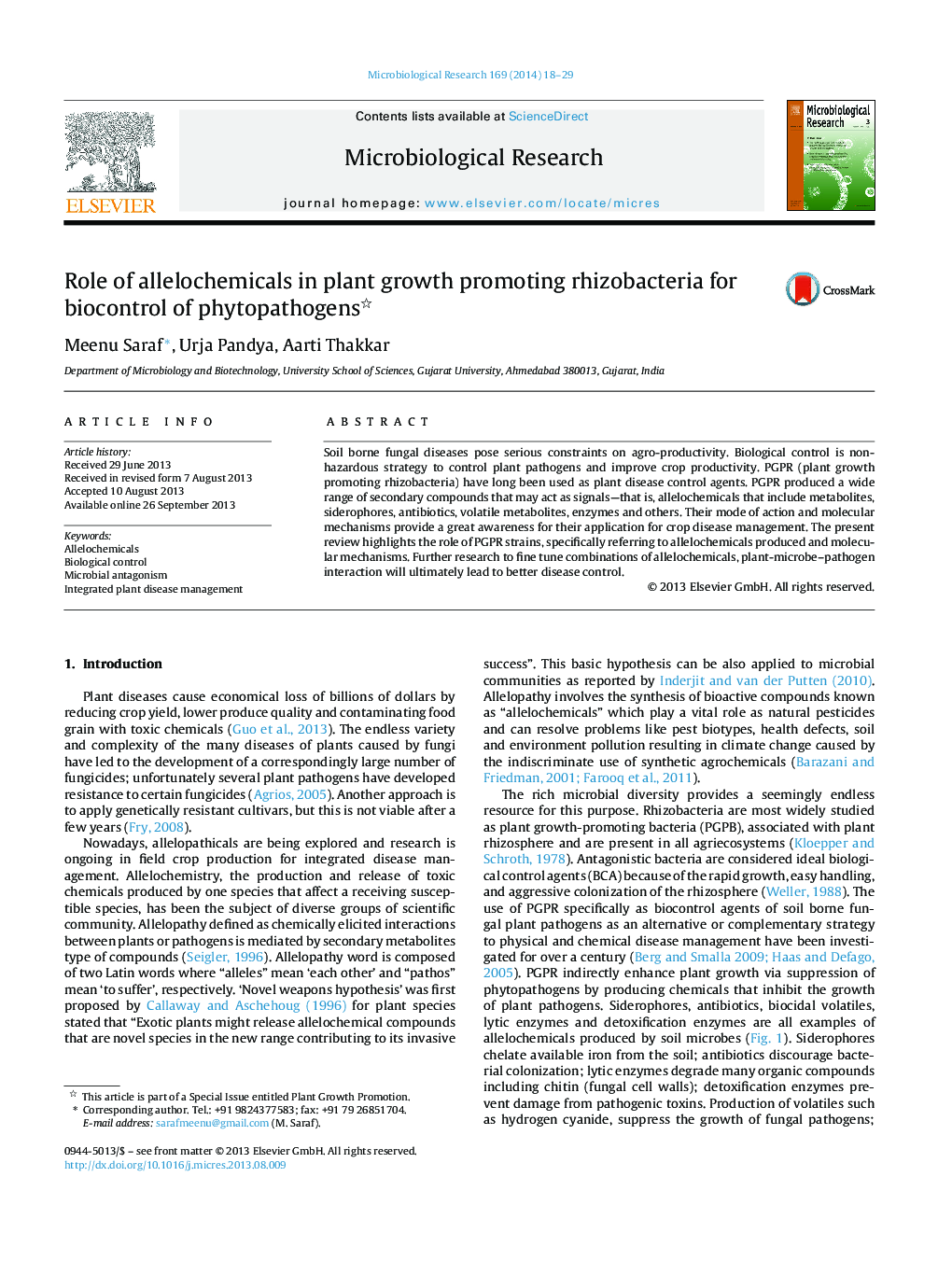| کد مقاله | کد نشریه | سال انتشار | مقاله انگلیسی | نسخه تمام متن |
|---|---|---|---|---|
| 2092295 | 1081780 | 2014 | 12 صفحه PDF | دانلود رایگان |
Soil borne fungal diseases pose serious constraints on agro-productivity. Biological control is non-hazardous strategy to control plant pathogens and improve crop productivity. PGPR (plant growth promoting rhizobacteria) have long been used as plant disease control agents. PGPR produced a wide range of secondary compounds that may act as signals—that is, allelochemicals that include metabolites, siderophores, antibiotics, volatile metabolites, enzymes and others. Their mode of action and molecular mechanisms provide a great awareness for their application for crop disease management. The present review highlights the role of PGPR strains, specifically referring to allelochemicals produced and molecular mechanisms. Further research to fine tune combinations of allelochemicals, plant-microbe–pathogen interaction will ultimately lead to better disease control.
Journal: Microbiological Research - Volume 169, Issue 1, 20 January 2014, Pages 18–29
